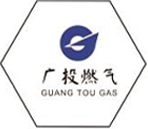
Aug . 20, 2024 05:23
Back to list
Natural Gas Safety Valve for Secure and Efficient Usage
The Importance of Natural Gas Safety Valves
Natural gas is one of the most widely used energy sources in the world today, powering homes, industries, and vehicles. However, with its extensive use comes the critical need for safety measures to prevent accidents and ensure the secure handling of this highly flammable substance. One of the most essential components in the natural gas infrastructure is the safety valve, known as the صمام أمان الغاز الطبيعي in Arabic. This article will explore the significance, functionality, and types of safety valves in natural gas systems.
Understanding Safety Valves
Safety valves are mechanical devices designed to control the pressure within a system. In the context of natural gas, these valves play a crucial role in preventing over-pressurization, which can lead to dangerous leaks, explosions, or fires. By automatically releasing gas when the pressure exceeds a predetermined level, safety valves help maintain safe operating conditions.
How Safety Valves Work
The basic mechanism of a safety valve involves a spring-loaded lever that opens under excessive pressure. When everything functions normally, the valve remains closed. However, as pressure builds up—potentially due to equipment malfunctions, blockages, or rapid temperature changes—the valve opens to release excess gas safely. This controlled release not only protects the equipment but also safeguards the lives of individuals in the surrounding area.
Safety valves are usually set to open at a specific pressure level, which is determined by industry standards and regulations. Regular maintenance and testing of these valves are essential to ensure their reliability and functionality. Failure to maintain these valves may lead to catastrophic failures and endanger public safety.
Types of Safety Valves
There are various types of safety valves used in natural gas applications, each designed for specific situations
صمام أمان الغاز الطبيعي

1. Relief Valves These are designed to open gradually between the set pressure and the reseating pressure. They are typically employed in systems where minor fluctuations in pressure are common.
2. Safety Relief Valves These valves can handle both liquids and gases, making them versatile for different applications. They provide immediate discharge of excess pressure, ensuring rapid response in emergencies.
3. Pilot-Operated Safety Valves These valves use a small pilot valve to control a larger main valve. They offer precise and stable operation, making them ideal for high-pressure systems.
4. Back Pressure Valves These valves maintain a certain level of pressure within a system, preventing backflow and ensuring consistent pressure levels.
Regulatory Standards and Best Practices
The installation and maintenance of natural gas safety valves are governed by strict industry regulations. Entities such as the American Society of Mechanical Engineers (ASME) and the American National Standards Institute (ANSI) provide guidelines to ensure safety and reliability in natural gas systems. Companies must adhere to these regulations to avoid legal consequences and, more importantly, to protect public safety.
Best practices for safety valve maintenance include regular inspections, testing, and documentation. Operators should ensure that safety valves are easily accessible for maintenance and have a clear understanding of the specific requirements for each valve type.
Conclusion
In conclusion, safety valves are critical components in the safe management of natural gas systems. They play an indispensable role in preventing accidents that could lead to disastrous consequences. As natural gas continues to be a staple energy source, understanding and implementing robust safety measures, including the proper use and maintenance of safety valves, remains paramount. By prioritizing safety, we can harness the benefits of natural gas while minimizing risks to both people and the environment.
Latest news
-
Safety Valve Spring-Loaded Design Overpressure ProtectionNewsJul.25,2025
-
Precision Voltage Regulator AC5 Accuracy Grade PerformanceNewsJul.25,2025
-
Natural Gas Pressure Regulating Skid Industrial Pipeline ApplicationsNewsJul.25,2025
-
Natural Gas Filter Stainless Steel Mesh Element DesignNewsJul.25,2025
-
Gas Pressure Regulator Valve Direct-Acting Spring-Loaded DesignNewsJul.25,2025
-
Decompression Equipment Multi-Stage Heat Exchange System DesignNewsJul.25,2025

